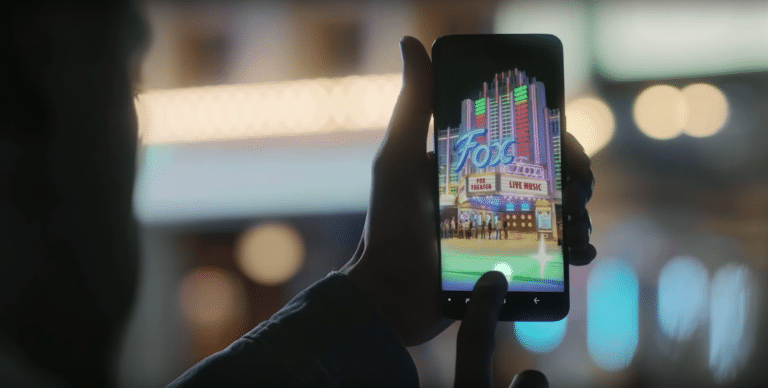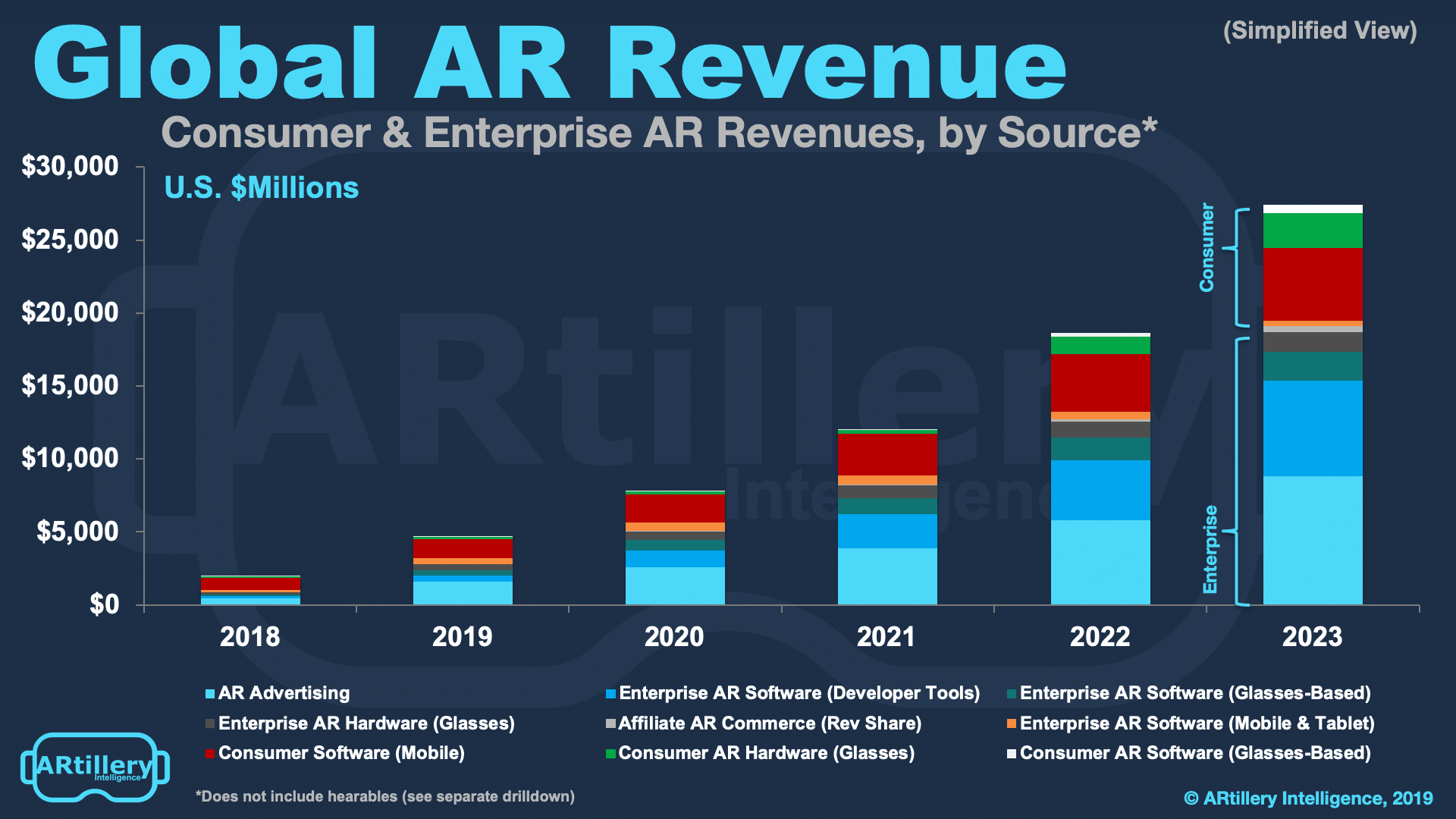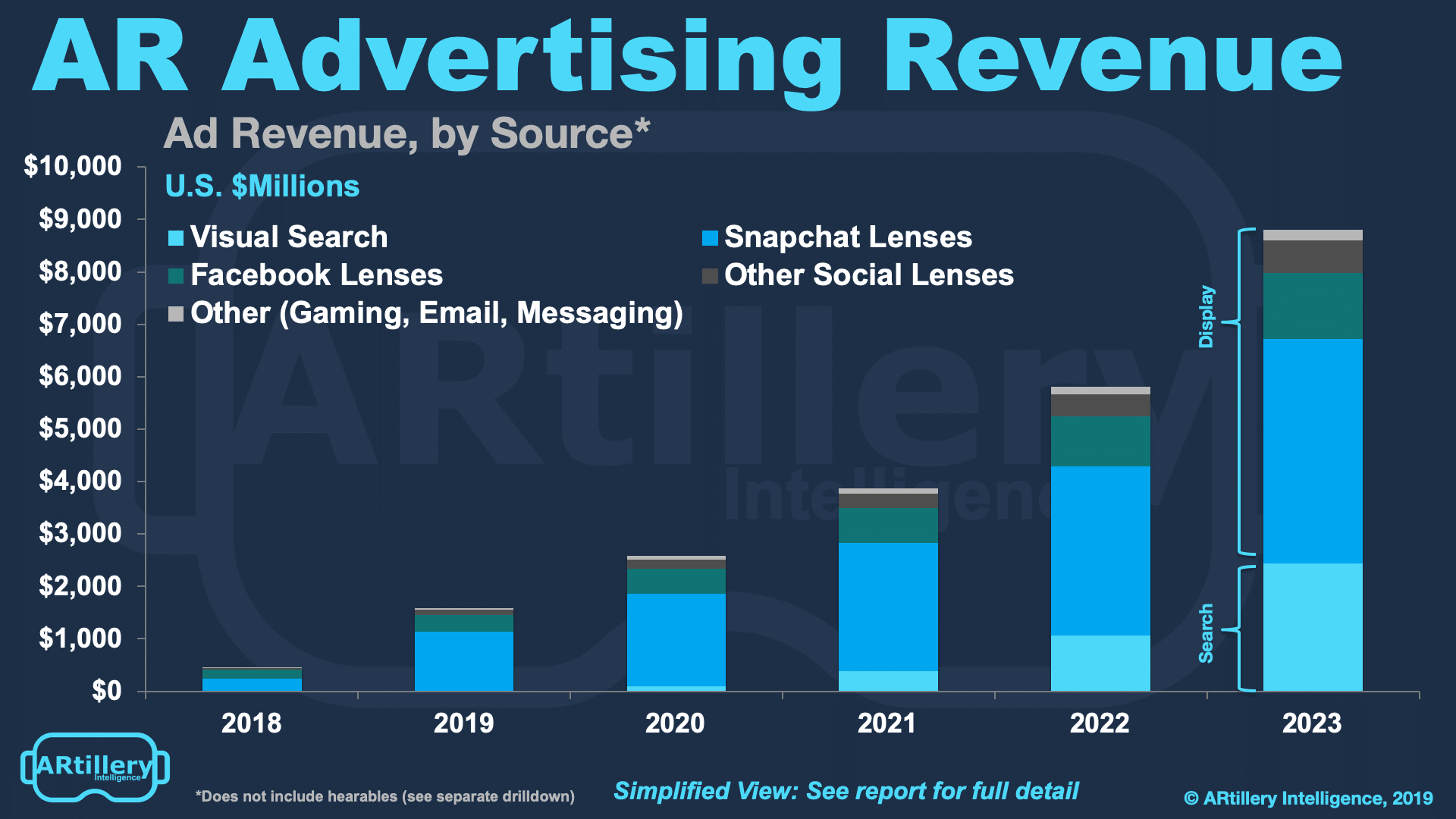
This post is adapted from ARtillery Intelligence’s report, Mobile AR Strategies & Business Models. It includes some of its data and takeaways. More can be previewed here and subscribe for the full report.
In AR’s early stages, a common question continues to be asked: where’s the money? There have been oscillations in excitement and doubt over AR, but the ultimate proof point will be revenue. Though aggregate revenues have disappointed, there are segments that are bearing fruit.
So we’ve determined the three biggest revenue categories for consumer-based mobile AR. We’ve examined them on qualitative and quantitative levels. The former entails product models, leading companies and best practices. The latter entails market sizing and revenue projections.
But before we dive into these models, starting today with advertising, what are they at a high level? We categorize them as follows:
1. Advertising (brands pay)
2. In-app purchases (consumers pay)
3. AR-as-a-service (enterprises pay)

Drilling Down on Ad Revenue
Picking up where we left off last week, what ad formats are materializing in AR. The most common format of course is AR lenses, such as branded overlays seen in social contexts like Facebook and Snapchat. This is where the vast majority of AR ad dollars are spent, but the plot will thicken.
In Fact, AR advertising is starting just as the digital ad world did, with display ads out of the gate first. Visual search will follow, led by Google, Pinterest and Amazon. It will bloom later due to greater technical complexity but will likely carry more “high-intent” value… just like search itself.
AR ad formats will then evolve into several formats that mirror – and extend beyond – the digital ad formats we know today. That includes things like email, and messaging. So how are these taking form so far? Beyond social lenses, Here’s a breakdown of AR ad formats developing.

Search
Google is highly motivated to visual search in order to “future proof” it’s core business. This plays out through Google Lens (visual search) and Live View (AR mapping/navigation). This “search what you see” use case involves using your mobile phone interface to contextualize the world.
This will start with general-interest search categories like pets and flowers, but eventually move to products and packaged goods (monetizable). In all cases, it will utilize Google’s robust image database for object recognition. Google is also advantaged in that can “incubate” AR in search.
For example, at the Google I/O developer conference in May, it showed how it’s positioning AR within search results for users to see 3D visual representations of search results. This will be like training wheels or a “gateway drug” to acclimate large audiences to AR in a trusted environment.
The first step, as always, will be growing users and engagement levels in these ways. But then monetization will follow. We believe Google will start to monetize things like Google Lens, given that it has a natural use case to identify commercial products or local storefronts.
Once it flips the monetization switch, we believe growth will come quickly. That will be a function of Google’s reach as a mobile search engine (95 percent market share) as well as the global penetration of Android OS. Specifically, we project visual search to grow to $2.44 billion by 2023.

Conversational Commerce
As stated above, the AR advertising landscape will evolve in ways that are similar to online and mobile advertising. Display ads (lenses) are out of the gate first, just like display ads were the first prevalent format on the web. Then formats splintered into other areas like search and messaging.
The latter is where AR advertising could be headed next. This comes at a time when the act of messaging businesses (“conversational commerce”) is growing. This is a function of millennial proclivities for messaging as a communication channel across personal and commercial contexts.
“We’re calling this ‘AR chat’,” said NexTech’s Paul Duffy at AWE “If you’re a retailer thinking about commerce … the new battleground is not the website, it’s actually the messaging app — the conversational commerce happening day-in and day-out between customers and brands.”
Nextech AR Solutions is big on this fusion of AR and brand-consumer messaging. It has applied its ARitize platform towards this opportunity and has already tested it with a few consumer goods brands. The idea is that AR product visualization can launch directly from messaging apps.
The way this plays out is by infusing AR with customer messaging threads already underway. Live agents or bots can send users 3D product renderings to visualize in their immediate space. NexTech has already partnered with Live Person and shoe outfitter Tamara Mellon to do just that.

Spanning the Purchase Funnel
This plays to AR’s strengths because these threads are already on a mobile device. Typed content can also signal agents to respond in optimal ways that lead consumers towards AR visualizations and, ultimately, conversions. And messaging is already transaction-enabled within most chat apps.
“Because they haven’t left the messaging app, the purchase can be handled in this case by Apple Pay,” said Duffy during a case study for Tamara Mellon. “The customer has taken the AR app, put it into their room, selected the product, and made the purchase all within that system.”
This is a good example of AR’s rare “full-funnel” ability. Besides being compelling to shoppers, brands are attracted to the high conversion rates and measurability. That’s already the case per AR advertising’s performance, but bringing it to messaging could amplify the opportunity.
“In the spirit of removing friction in the customer journey and embedding yourself at those touchpoints where customers make decisions, this is one strong candidate for where AR makes a compelling difference,” said Duffy. “We think it’s going to be a great new battleground for AR.”
We’ll be back next week to continue the discussion around developing AR ad formats, and will dive into gaming and email as the next possible channels. Meanwhile, see more about this report or subscribe to access it here. This will be a quickly moving target as AR finds its footing.
For deeper XR data and intelligence, join ARtillery PRO and subscribe to the free AR Insider Weekly newsletter.
Disclosure: AR Insider editor and author of this post Mike Boland has a position on the advisory board of NextTech AR Solutions, a company mentioned in this post. Disclosure and ethics policy can be seen here.
